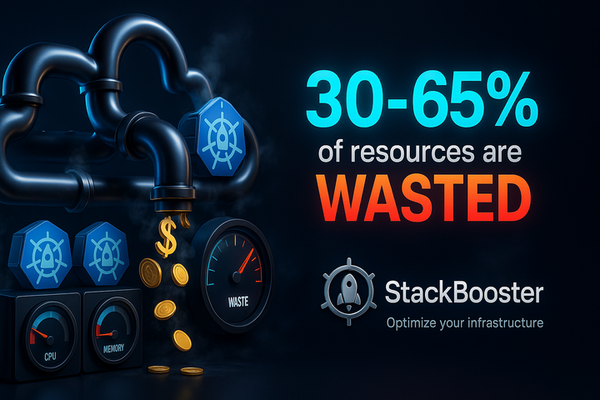Modernizing Legacy Systems: Migrating from AWS Elastic Beanstalk to Kubernetes

1. Introduction to AWS Elastic Beanstalk
AWS Elastic Beanstalk is a Platform as a Service (PaaS) offering from Amazon Web Services that streamlines application deployment and management for developers.
AWS Elastic Beanstalk Overview
Elastic Beanstalk Features
- Easy Deployment: Upload your code, and Elastic Beanstalk automatically handles capacity provisioning, load balancing, scaling, and application health monitoring.
- Supported Platforms: Supports a variety of programming languages and frameworks, including Java, .NET, PHP, Node.js, Python, Ruby, and Go.
- Managed Service: Ideal for small teams or startups looking to get applications up and running quickly without deep DevOps expertise.
Why it’s Often Chosen Initially
- Speed to Market: Accelerates the deployment process for new applications.
- Reduced Complexity: Abstracts much of the infrastructure setup and management.
- Cost-Effective for Small Scale: Initially low costs when dealing with minimal traffic and resources.
2. Common Challenges with AWS Elastic Beanstalk
While Elastic Beanstalk offers ease of use, many businesses encounter limitations as their applications and teams grow.
| Challenges | Description |
|---|---|
| Deployment Complexities |
|
| Scaling Issues |
|
| Lack of Advanced Customization |
|
| Operational Overheads |
|
3. Why Migrate to Kubernetes (K8s)
Kubernetes has emerged as the de facto standard for container orchestration, offering numerous benefits over traditional PaaS solutions.
| Feature | Description |
|---|---|
| Flexibility and Control |
|
| Scalability |
|
| Advanced Orchestration |
|
| Ecosystem and Community Support |
|
4. Planning the Migration
Transitioning to Kubernetes is not a simple lift-and-shift operation. It involves a comprehensive overhaul of your infrastructure and application architecture. Here are some key challenges you might face:
a. Complexity of containerization
Dockerization: Packaging applications into Docker containers requires meticulous attention to detail to ensure all dependencies are correctly included.
Configuration management: Managing environment variables, ConfigMaps, and Secrets to maintain consistent configurations across multiple environments can be daunting.
b. Cluster setup and management
Choosing the right kubernetes service: Deciding between managed services like Amazon EKS or self-managed clusters involves evaluating cost, control, and scalability.
Networking and storage: Configuring VPCs, subnets, security groups, and persistent storage solutions requires deep technical expertise.
c. Security and compliance
Access controls: Implementing Role-Based Access Control (RBAC) to secure your clusters demands a thorough understanding of Kubernetes security best practices.
Compliance standards: Ensuring your setup meets industry-specific compliance requirements adds another layer of complexity.
d. Data migration and downtime minimization
Seamless data transfer: Migrating databases and ensuring data integrity without significant downtime is a critical and challenging task.
Cutover strategy: Planning DNS updates and decommissioning old environments without disrupting user experience requires precise execution.
e. Ongoing maintenance and optimization
Resource management: Continuously monitoring and optimizing resource allocation to manage costs and performance.
Monitoring and logging: Implementing robust monitoring and logging solutions to maintain visibility into your applications and infrastructure.
Conclusion
Migrating from AWS Elastic Beanstalk to Kubernetes can unlock significant benefits in scalability, flexibility, and operational efficiency. While the transition requires careful planning and execution, the long-term advantages position businesses for growth and innovation.
Ready to Migrate?
StackBooster provides expert consulting services to guide you through the entire migration process. Additionally, you can create your own Kubernetes clusters from scratch using the app.stackbooster.io. It includes all the necessary setup tools, such as CI/CD, logging, observability, and monitoring. If you need a demo with our technical specialist please use this form:

We can offer personalized assistance with your setup.






